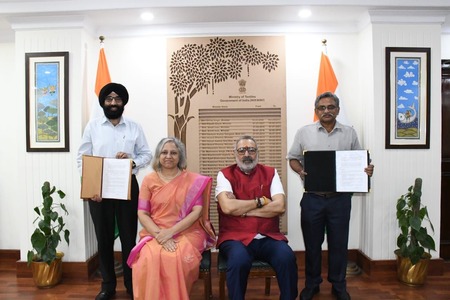
Allahabad University develops eco-printing for cotton and silk fabrics
YarnsandFibers News Bureau 2023-07-24 16:25:50 – IndiaResearchers at Allahabad University have derived an eco-friendly method for developing botanical prints over silk and cotton fabrics by making use of rose leaves.
According to a report from the local newspaper, this groundbreaking technology utilizes the natural pigments found in plant leaves to extract and transfer them directly onto cloth, resulting in visually stunning prints. The chlorophyll pigment present in rose leaves is successfully printed with the help of alum.
The chemicals were replaced by alum as a mordant, which is an agent to fix colors over textiles. These natural colours also bring down the risks of allergy to almost zero.
This new eco-printing technology has been given a 5 star rating in quality by the Northern India Textile Research Association (NITRA) after testing. This research was published in the May issue of the International Journal of Engineering Technology and Management Science.
Aanchal Manuja, a research scholar in the Department of Family and Community Sciences at the University of Allahabad, has created an eco-printing technology that eliminates the need for chemicals. This groundbreaking technique, developed under the guidance of Assistant Professor Dr. Monisha Singh, is considered one of the most advanced printing methods available.
The recently crafted fabric prints underwent rigorous testing to ensure their quality and durability. These tests included assessments of their resistance to washing, dry cleaning, perspiration, rubbing, and exposure to sunlight. The standards followed were meticulously upheld, in accordance with ISO and AATCC guidelines.
Market Intelligence
Ask for free sample Report

experience
Customer Base
dedicated team
Countries Served Worldwide









